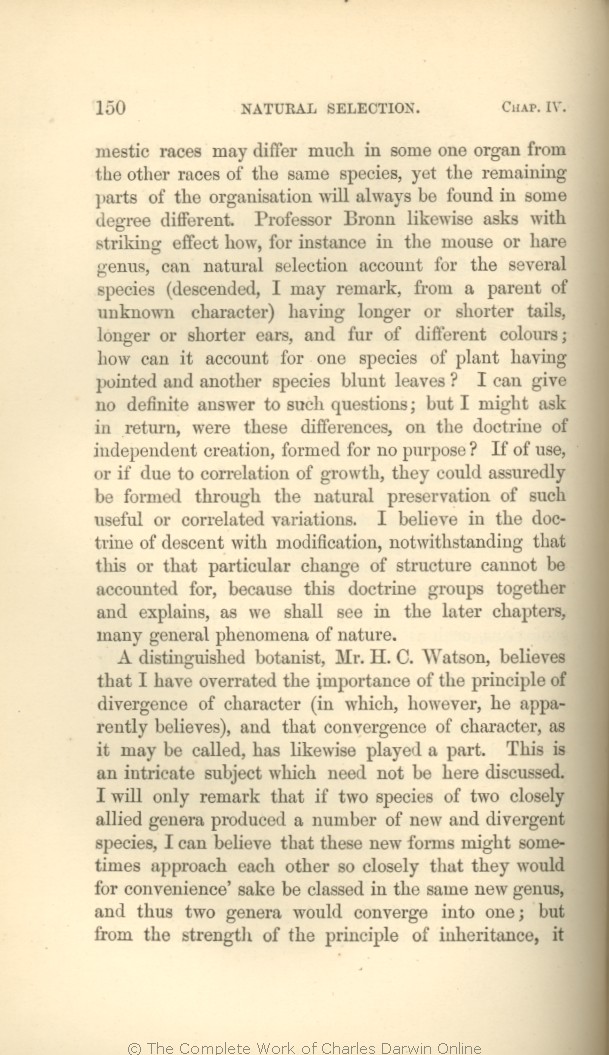races may differ much in some one organ from the other races of the same species, yet the
remaining
parts of the organisation will always be found in some degree different. Professor Bronn likewise asks with striking effect how, for instance in the mouse or hare genus,
can natural selection | can natural selection 1866 |
| natural selection will 1861 |
|
|
A distinguished botanist, Mr. H. C. Watson, believes that I have overrated the importance of the principle of divergence of character (in which, however, he apparently believes), and that convergence of character, as it may be called, has likewise played a part. This is an intricate subject which need not be here discussed. I will only
remark
that if two species of two closely allied genera produced a number of new and divergent species, I can believe that these new forms might sometimes approach each other so closely that they would for
convenience' | convenience' 1866 | | convenience 1861 |
|









